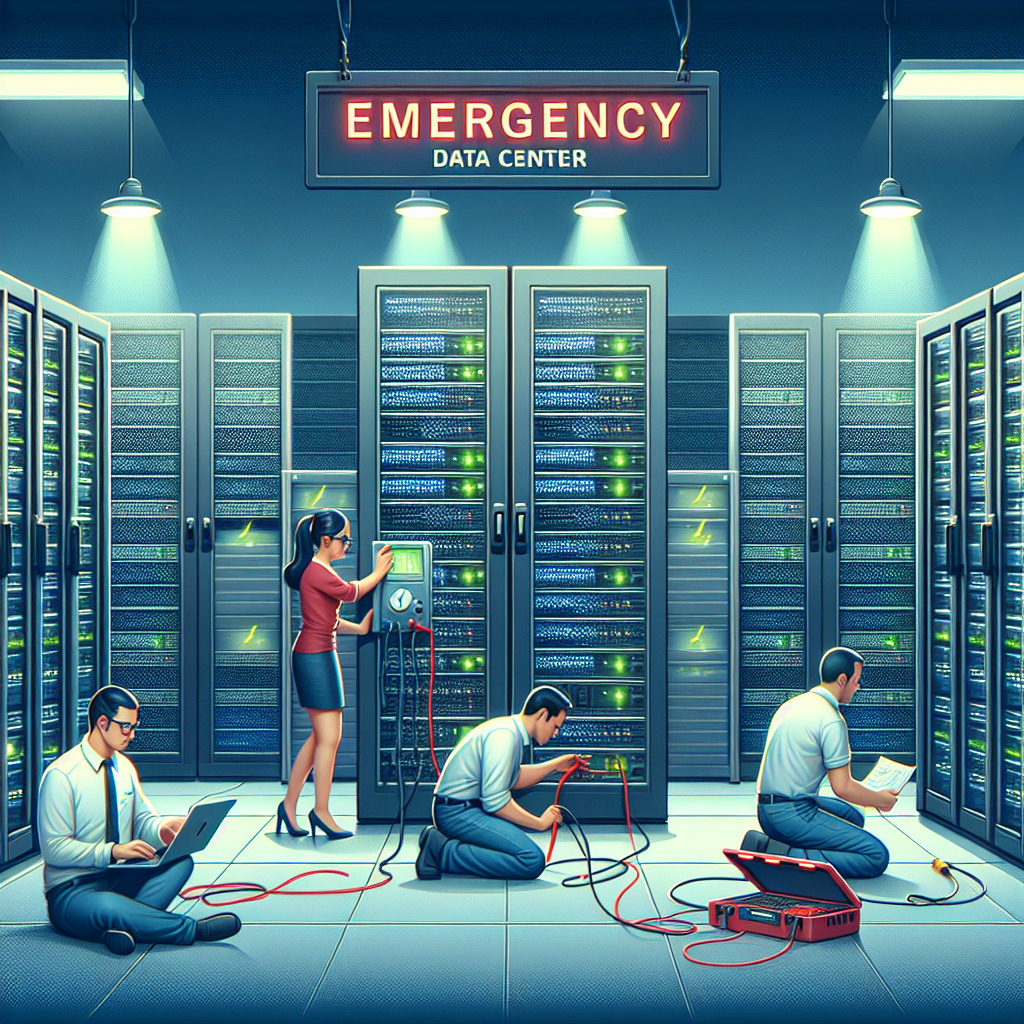Your cart is currently empty!
Emergency Data Center Repairs: Strategies for Minimizing Downtime

Data centers are the backbone of any organization’s IT infrastructure, housing critical servers, networking equipment, and storage devices that are essential for day-to-day operations. However, like any technology, data centers are not immune to failure, and when they do go down, the impact can be devastating.
In the event of a data center outage, time is of the essence. Every minute of downtime can result in lost revenue, decreased productivity, and damage to the organization’s reputation. That’s why it’s crucial for IT teams to have a plan in place for emergency data center repairs to minimize downtime and get operations back up and running as quickly as possible.
Here are some strategies for minimizing downtime during emergency data center repairs:
1. Regular maintenance and monitoring: Prevention is always better than cure. Regular maintenance of data center equipment, including cleaning, testing, and replacing components, can help identify and address potential issues before they cause a major outage. Monitoring tools can also provide real-time alerts for any anomalies or failures, allowing IT teams to take proactive action.
2. Redundancy and failover systems: Redundancy is key to minimizing downtime in data centers. By implementing failover systems for critical components, such as power supplies, cooling systems, and networking equipment, organizations can ensure that operations can continue even in the event of a failure. Redundant data backups are also essential for quickly restoring services in the event of data loss.
3. Disaster recovery plan: A comprehensive disaster recovery plan is essential for any organization with a data center. This plan should outline procedures for responding to emergencies, including who is responsible for what tasks, how to communicate with stakeholders, and how to restore services as quickly as possible. Regular testing and updating of the disaster recovery plan can help ensure that it remains effective in the event of an outage.
4. On-call support: In the event of a data center outage, having 24/7 on-call support from IT staff or external vendors can help ensure that repairs can be made quickly and efficiently. IT teams should have access to spare parts, tools, and documentation to facilitate repairs, and should be prepared to work around the clock to restore services.
5. Communication and transparency: During a data center outage, communication is key. IT teams should keep stakeholders, including employees, customers, and partners, informed about the situation and provide regular updates on the progress of repairs. Transparency about the cause of the outage and the steps being taken to resolve it can help maintain trust and confidence in the organization.
In conclusion, emergency data center repairs are a fact of life for IT teams, but by implementing proactive strategies for minimizing downtime, organizations can mitigate the impact of outages and ensure that operations can resume as quickly as possible. Regular maintenance, redundancy, disaster recovery planning, on-call support, and clear communication are all essential components of an effective strategy for handling data center emergencies. By being prepared and proactive, organizations can minimize the impact of downtime and keep their operations running smoothly.

Leave a Reply